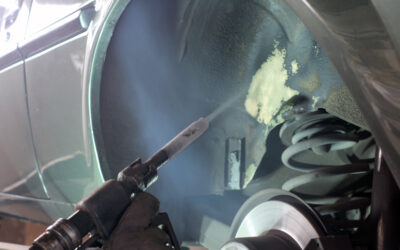Food industries go through constant challenge of maintaining high level of cleanliness and hygienic standards for obvious reasons.
The ancient cleaning methods that are dependent on water and manual scrubbing are very time consuming and demands arduous labour. The advanced method of dry ice blast cleaning is rapidly gaining acceptance as a substitute to traditional industrial cleaning methods because it is well-capable of rapidly eradicating stubborn deposits from processing equipment and production environment as well.
Dry ice cleaning is very similar to sand, and soda blasting as in these methods it includes cleaning surfaces using a media accelerated in a pressurized air stream. However, dry ice cleaning involves solid CO2 pellets or microparticles which are accelerated to high velocities to get imposed on the surface and clean it well. The particles sublimate upon lifting dirt, impact, and contaminants off the underlying substrate without causing any damage to the equipment.
The strict regulations imposed in food storage and preparation has made dry ice, an essential tool in food factory, packing machines, packing lines. Dry ice is useful in the bacterial removal of mildew and mold found in places where food is expected quite often. Remaining as sanitary as possible is amongst the most vital parts of working in a kitchen. Since dry ice helps in removing the source of bacterial growth, it can also prevent food borne diseases or any allergic reactions.
Did you know? Dry ice is an essential part in food storage. Restaurants and supermarkets are now-a-days preferring dry ice to keep the food items fresh in storage and for display in open containers that we quite often come across for long periods of time. Using dry ice is a standard practice in any food industry but sometimes it can be dangerous too. So, for safety purposes make sure to keep the respective areas well ventilated, and try to avoid them coming in direct contact with your delicate skin.
The traditional cleaning methods which were used earlier are a lot time-consuming, labor-intensive and expensive and might be not under reach for many. Manual scrubbing with strong wire brushes and water, chemicals might take long hours to clean and result in extensive downtime and the possibility arises when it can cause damage to equipment, that land up shortening asset life and making it less productive that it is expected to be. This process of industrial cleaning, believe us, thoroughly makes cleaning easier, more precise and enables food processing facilities to rapidly clean a number of different surfaces and get them back into function instantaneously.
Lets’ check out as why food industries rely on dry ice cleaning now-a-days:-
1. No secondary waste is generated
Yes, you read it right that industrial surface cleaning with dry ice improves sustainability efforts. It sublimates upon the impact with the surface being cleaned, and that means no residue, no secondary waste, and no moisture is left behind.
2. Completely Nontoxic
Dry ice doesn’t possess any color and is colorless, tasteless, odorless and even non-toxic.
It lets the elimination of environmentally dangerous cleaning chemicals that are used otherwise and eliminates worker exposure to various hazardous cleaning agents.
3. Nonabrasive
Dry ice can clean sensitive electronic equipment very effectively, such as circuit boards, without etching, profiling or even changing surface dimensions.
4. So inexpensive
Dry ice cleaning almost reduces the extra labor costs because it can be expected to be done in very less time than conventional manual labor would take. Dry ice enables a “cleaner” clean even in situations that seems quite difficult to clean manually with the usual conventional methods.
5. Enhances worker safety
Dry ice cleaning method eliminates the exposure of the workers from the toxic cleaning materials. The process is also useful because it eliminates the repetitive motions of hand-cleaning or scrubbing, or any activities that involves sanding, pounding, or scraping.





